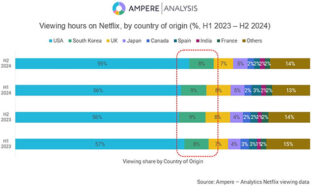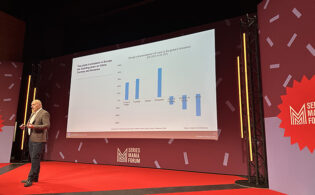While the global streaming sector has seen significant challenges this year, the landscape in the Asia Pacific has experienced growth thanks to advances in connectivity and disposable income gains, according to Ampere research.
As of the end of this year, more than 40 percent of the world’s streaming subscribers are in Asia, Ampere said as Asia TV Forum kicks off in Singapore this week.
The platforms in this region are extending their catalogs to boost their fortunes, with Ampere noting that local giants such as UNext and Hulu in Japan, HamiVideo in Taiwan and South Korea’s WatchaPlay feature lineups that are comparable in scale to global leaders Netflix and Prime Video. Of note, in Japan, local platforms added about 17 percent more titles this year than a year ago. Similarly, in Taiwan, MyVideo has grown its lineup to 9,000 titles and KKTV to 4,800.
But, Ampere notes, it’s not all about scale; catering to local market needs is crucial. Ampere reports that 18- to 24-year-olds are 25 percent more likely to enjoy anime and 19 percent more likely to enjoy horror than average. There are differences within the region, though; anime does well in the Philippines and Japan but less so in Australia and India.
There are also differences in how local content is viewed. Streaming users in China, India, Japan and South Korea prefer locally-produced TV shows and movies, while those in the Philippines, Indonesia, Malaysia and Thailand more frequently watch foreign-language content, Ampere says. Attitudes towards subtitling versus dubbing also differ across AsiaPac.
Tingting Li, senior analyst at Ampere, noted: “As the Asia-Pacific region continues to represent a solid growth opportunity, and as locally-produced content grows in popularity outside the region, both local and international streamers are primed to invest further in creating and acquiring content in the region. To win audiences in this crowded market, it is important to match content to the preferences and viewing patterns of each country. Platforms should complement widely-enjoyed, mainstream content to attract broad audiences, with up-and-coming niche genres to attract younger viewers. The right mix of subtitled and dubbed content will ensure audiences stay engaged and spur future growth.”






